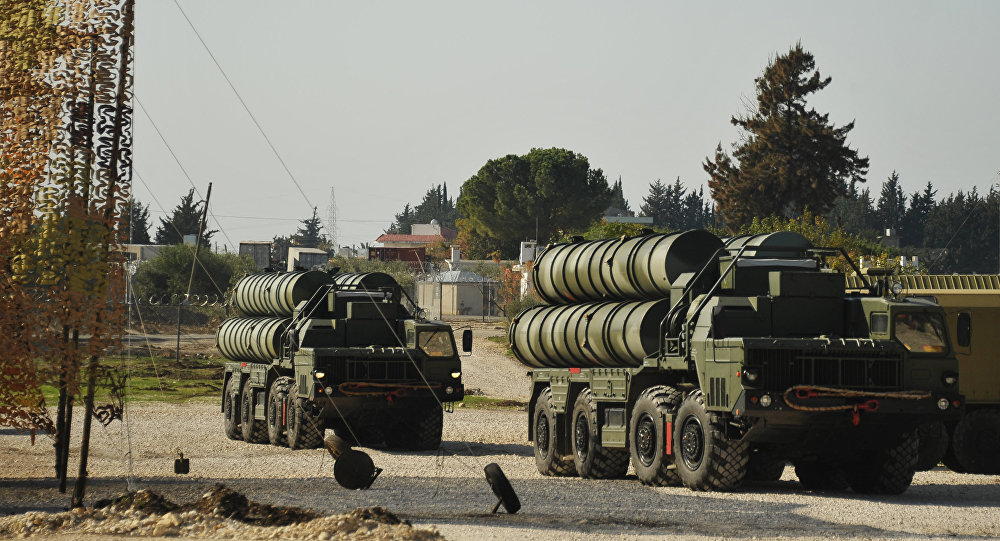
While trying to foresee Russia’s further moves in Syria, US strategy master Robert Farley has advanced what he considers “Russia’s five next big moves in Syria”,Syria”, which are set to come in the closest days or weeks; then again, for reasons unknown, the initial four are now already very active on the ground.
See the top five list after the jump break.
1.The Arrival of the Su-25 Grach (NATO Reporting Name “Frogfoot”)
“The shootdown of the Su-24 Fencer near Turkish territory demonstrated the vulnerability of the unescorted attack aircraft to modern jet fighters,” reads Farley’s article for The National Interest magazine.
#SYRIA #FOOTAGE Combat sorties of Su-34 aircraft equipped with “air-to-air” missiles https://t.co/Ut7YqDAlX9 pic.twitter.com/rL4aNrD25k
— Минобороны России (@mod_russia) November 30, 2015
The best way to protect the Russian air fleet in Syria, the author says, is to bring in “a tough, heavy attack plane like the Su-25 Frogfoot, which can have an immediate impact on the battlefield. “
#SYRIA Near #Zaytan (#Idlib),Su25’s performed strike on Jabhat al-Nusra militants destroying 1 tank, 2 armored vehicles, 3 cars with mortars — Минобороны России (@mod_russia) November 26, 2015
“With some indication that Russia is about to massively step up its air campaign in Syria, we can be sure that additional attack aircraft, like the Frogfoot, will soon appear in the skies over rebel held territory,” the author says.
In any case, Russia as of now has as much as 12 of the most recent Su-25 ground assault planes in Syria, 12 considerably all the more capable Su-34 (NATO reporting name Flanker-C) strike contenders and up to 16 Su-30 (NATO reporting name Flanker-C) supermaneuverable fighter aircraft, aside from its current arrangement of Su-24s and Su-27s.
From November 20, the size of the Russian air armada in Syria was expanded to 69 airplane.
2) Deployment of S-400 Surface-to-Air Missile System
“[…] in political terms the S-400 offers the Assad regime insurance against either a Western no-fly zone or an anti-Assad air campaign. This means, in effect, that ISIS (also known as ISIL and Daesh) and other Syrian rebels will need to defeat Assad (and Russia) on their own, without the direct kinetic support of any of their allies,” the article reads.
#SYRIA #FOOTAGE S-400 AA missile system deployed at #Hmeymim airbase https://t.co/CAeRBRl4JJ pic.twitter.com/zjOBLVdXAP
— Минобороны России (@mod_russia) November 26, 2015
“The S-400 gives Russia a practical veto over any Western action against Assad.”
The writer however recognized that the S-400 Triumf (NATO codename SA-21 Growler), a hostile to flying machine and against rocket framework, which is equipped for capturing a wide range of cutting edge air weaponry, including fifth-era warplanes, and also ballistic and cruise missiles at a most extreme scope of about 250 miles, has as of now been “delivered, deployed and put on air defense combat duty at Russia’s Hmeymim airbase in Syria.”
#SYRIA S-400 AA missile system delivered, deployed and put on air defence combat duty at #Hmeymim airbase pic.twitter.com/JXZ3hky5Wm — Минобороны России (@mod_russia) November 26, 2015
3. Diplomacy
“The most important weapon that Russia can use to save the Assad regime is its diplomatic corps,” the author claims neglecting to mention that Russia has been using this “tool” since the very start of the conflict in Syria.
Among its most recent proposition is a Russia-started counter-terrorism revelation effectively received by the foreign ministers of the Organization for Security and Co-operation in Europe (OSCE) in Belgrade earlier in December.
Russian President Vladimir Putin has since a long time ago called for the creation of a international coalition in the battle against terrorism, especially targeted on Daesh. Putin global on the requirement for global anti-terrorism endeavors, led withinf a legitimate system, at the UN General Assembly in September.
4.Intelligence, Surveillance and Reconnaissance
The author somewhat laments that “Russia does not now, and has never had the kinds of ISR (intelligence, surveillance and reconnaissance) assets that the United States takes for granted.”
However “Russian assets in this regard include not only recon aircraft and drones, but also electronic warfare units that can analyze rebel communications,” he acknowledges.
Earlier in October the very same magazine made a special report on “Russia’s electronic spies which have become a key part of Moscow’s surge into Syria.”
5.Spetsnaz (Russian Special Forces)
“Russia has a lot of war left to fight in Syria,” the author predicts. “The first weeks of US intervention in Afghanistan, and of NATO intervention in Libya, showed few obvious fruits of progress. In both cases air attacks had weakened and fragmented the resistance, however, eventually allowing major ground offensives to roll up the country.”
“Two or three months from now, the international community could be celebrating the successful efforts of the Russian military to defeat ISIS, and the Assad regime could be cheering the destruction of rebel factions in the west of the country.,” he therefore suggests.
However he fails to mention that Russian authorities, including President Putin, repeatedly ruled out any possible military presence on the ground in Syria.
#Russia, #Syria


No comments:
Post a Comment